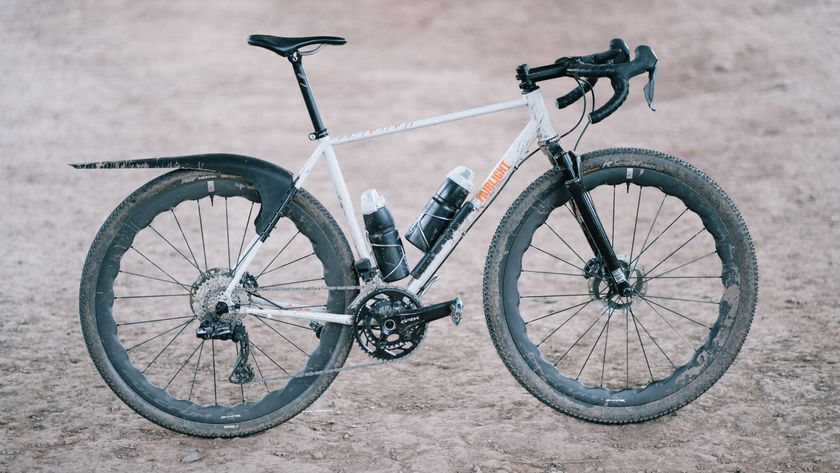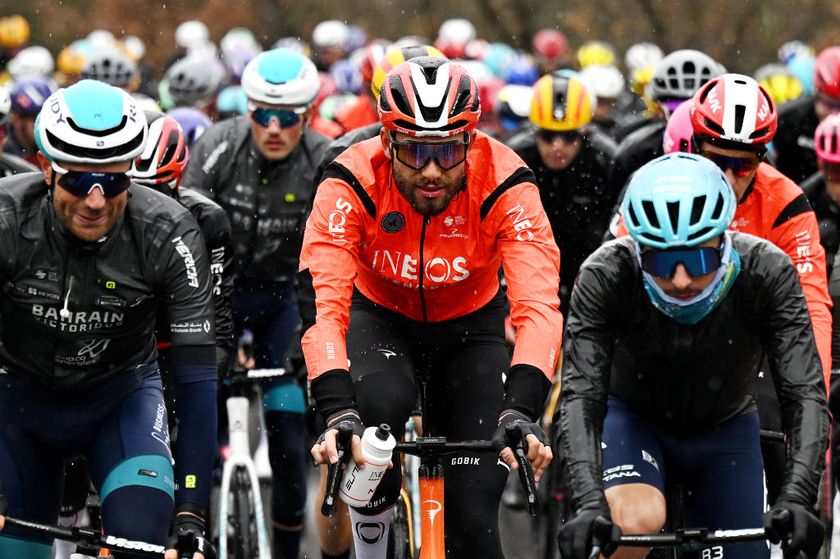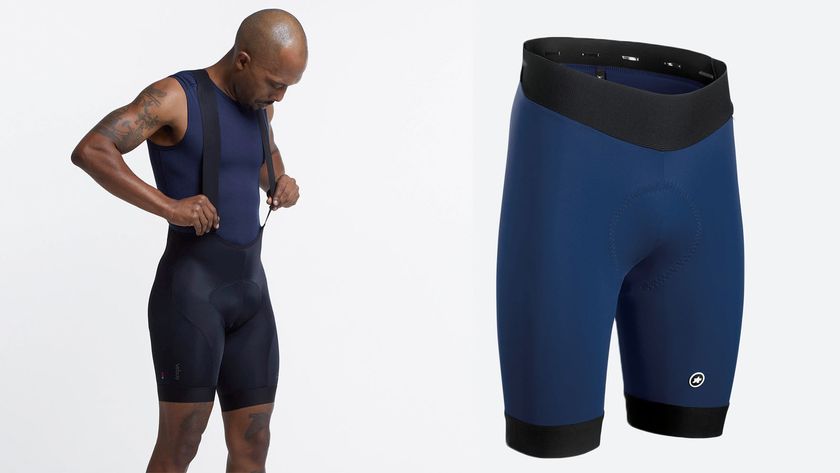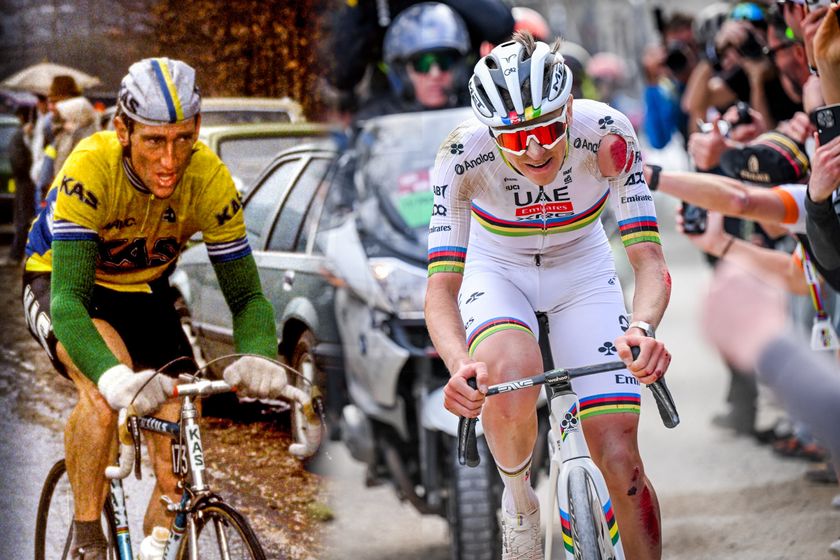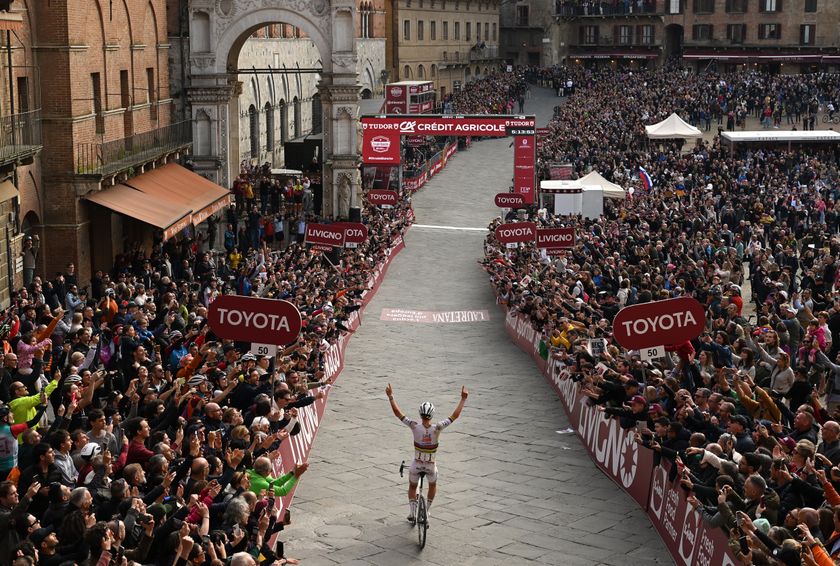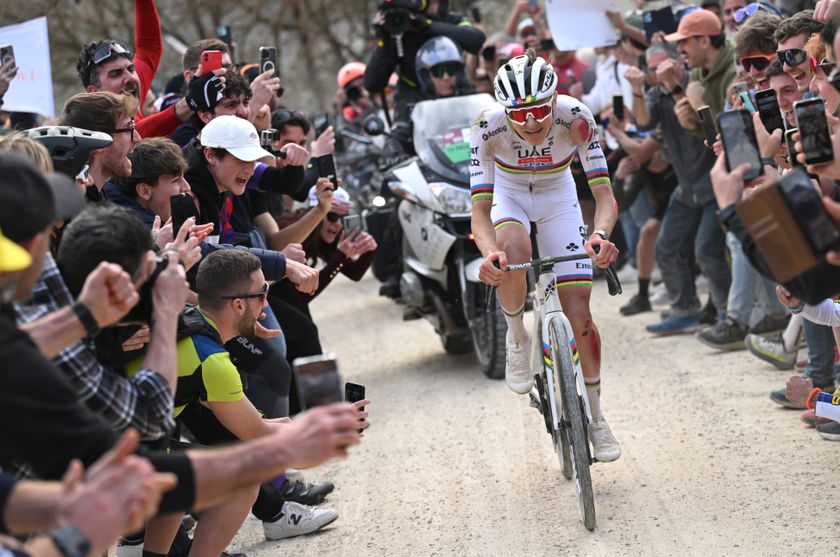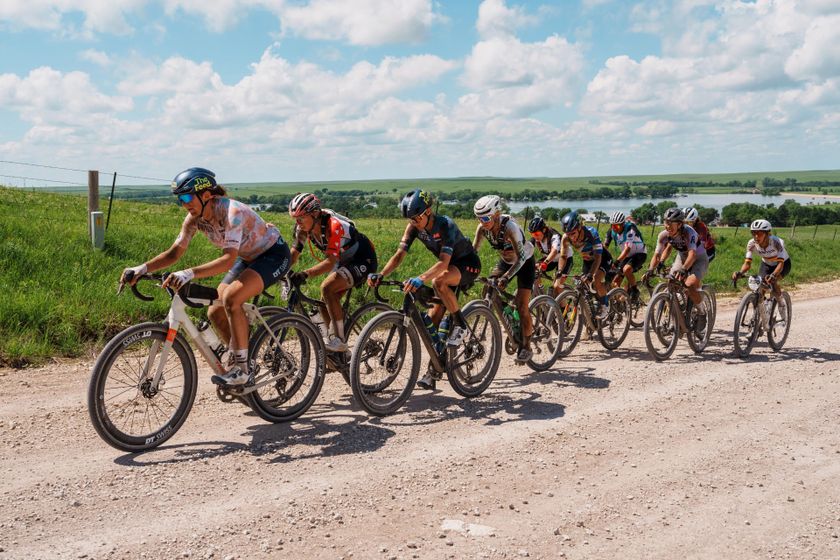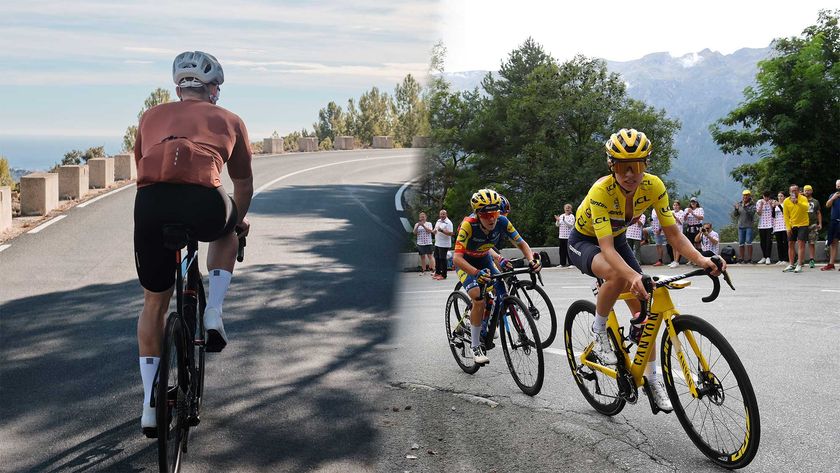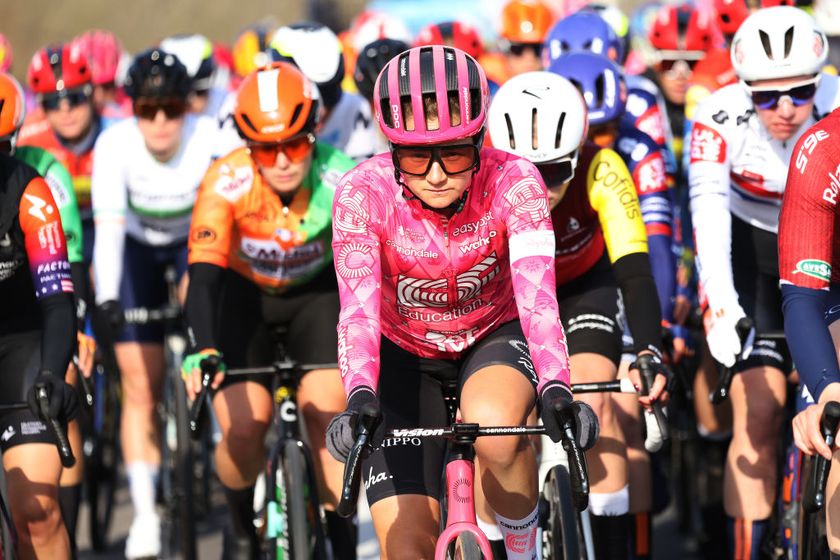Cyclingnews Fitness Q&A - October 7, 2009
Your fitness questions answered
Got a question about fitness, training, recovery from injury or a related subject? Drop us a line at fitness@cyclingnews.com. Please include as much information about yourself as possible, including your age, sex, and type of racing or riding.
Due to the volume of questions we receive, we regret that we may be unable to answer them all.
Possible overtraining
Hi
I am getting back into racing after 22 years - I'm 43 now! I ride approximately 150 - 190 miles a week.
My rides are at least five days a week with two rest days; four of those rides are high intensity group rides and one hard criterium. Do I not recover as well due to age, even though I'm fit and lean?
I really feel the burn on some days and get dropped! Even though I am feeling stronger? What gives should - I back off a little
Augie,
Palm Springs, CA, USA
Get The Leadout Newsletter
The latest race content, interviews, features, reviews and expert buying guides, direct to your inbox!
Scott Saifer says
Augie,
Training hard 3-4 days per week is a good way to rapidly develop a tolerance for hard work, but typically also brings a plateau and then loss of performance if it is done week after week for more than three weeks. Training hard is here defined as riding near lactate threshold (LT) long enough to come home tired.
Consistently going hard more than two days per week is a recipe for overtraining and burnout for most riders, young or old. A few lucky riders might be able to handle a third day week after week. Pick two days each week to go hard and then do endurance building or recovery rides on the remaining days, depending on how you feel - you'll feel better in 2-3 weeks.
Choosing shoes
A few months ago I had a local dealer perform a fit using the Specialized BG fit system. At the time of the fit I had Specialized shoes and we put some 1.5mm shims in there underneath the standard insoles.
I am in the market for new shoes and I noticed on the Specialized site that their shoes already have a 1.5mm shim built in, but I can't find any information out regarding other brands. Would you advise me to stick with the Specialized brand shoes or am I free to experiment with other brands as long as I duplicate the total shim height?
The Specialized shoes do not fit my feet well so I am trying to figure out a way to retain my position without being confined to a single brand or having to get refit.
Karsten,
USA
Dave Palese says
Karsten,
I don't know of any other brand of shoes that has the varus shim built into the shoe like the Spcialized Body Geometry shoes. That said, you can replicate the same canting using shims on the outside and the inside of the shoes.
BikeFit systems (www.bikefit.com) offer exterior wedges for shimming varus and valgus tilt behind the cleat on the outside of the shoe. They also do an interior shim called the ITS wedge that is similar to what Specialized does. Both can be used in conjunction with each other to acheive the affect you are looking for.
Hope this helps. Have fun!
Steve Hogg says
Karsten,
To add to what Dave has said; while I know that Specialized say they have varus compensation built into their shoes, I have found no evidence of it when fitting many the riders who use two different pairs of shoes, with one of those being Specialized.
Furthermore, the Specialized in-shoe wedges you are currently using inside the shoe have zero effect in increasing the flow of proprioceptive feedback from feet which is the major job of a wedge or wedges in my view.
The Bike Fit Systems wedges, both in shoe and cleat wedges do increase the flow of proprioceptve feedback from the entire kinetic chain involved in pedaling if the individually correct number is used for each foot.
What that means is that when you get your new shoes, use BFS wedges and you will have to probably start the wedging process again from scratch.
Choosing shoes, Part 2
Continuation of above correspondence
This actually makes a lot of sense Steve, because I haven't felt any faster or more powerful since my fit. My knee pain went away, but I feel slower overall and never seemed to actually adapt to the new fit. How long do you recommend going between shim changes and how should I monitor proper tracking and know when its right?
Steve Hogg says
If you are not performing better, it isn't possible to know how much of that is because of the wedges and how much of that is because of the other positional parameters that were adjusted at the time of the fit.
The several months that have elapsed since your fit is more than enough time for any improvement to be obvious if it was going to happen. Once you find some shoes that you are happy with, you have two choices.
The first is to find a high quality bike fitter who uses BFS wedges and enlist their help. The second is to try the self help route. That involves buying some BFS wedges and experimenting with some care and patience.
There is a definitive method to determine when you have got the wedging right but it isn't something that lends itself to email transmission, so trial and error will have to do for the time being.
What you should be seeking from wedges is the feeling of greater stablity of foot on pedal and a more fluent pedaling stroke with less pelvic movement and good knee tracking.. I've been doing a bit of research for my own purposes and at this stage this indicates that:
98.75% of riders need wedging under one or both feet
90.00% need wedges on the left side
96.87% need wedges on the right side
Average number of wedges per rider under the left foot is 3.12
Average number of wedges per rider under the right foot is 2.67
You may or may not be 'average' so exercise some care and patience and you should get a positive result. If you run into problems, get back to me.
Getting the right coaching
Hi,
I'm a 23-year-old male, 5'6 tall and weigh 61kg. I've been cycling since I was 12. During the past five years I've been riding on and off mainly due to work commitments. I've always felt that I've got a lot of potential as a cyclist and would like to see exactly what I'm capable of. By this I mean I'd like to see if I'm cut out for professional cycling.
At the moment my fitness isn't nearly what it's been in the past but I've made a commitment to get back on the bike, regardless of work and would like to figure out the best way to approach it.
At the moment, I'm spending a lot of time training on my ergo trainer seeing as the weather's not really conducive to riding outdoors. The last time I tested, approximately a week ago, my power at lactate threshold was 195W with an average heart rate of 187bpm. This was done over a 30-minute test on the ergo trainer.
Now for the question:
Obviously I'd start out with base mileage, lots and lots of miles at low intensity. Then I'd ramp up the intensity slightly with some 60 - 70% HR tempo intervals but I'm not really sure where to go from there.
Eventually I'll graduate onto professional coaching but before I do I'd like to be at a decent fitness level before I commit the time/money/effort and lack of social life.
Kevin,
UK
Scott Saifer says
Kevin,
I think that the reverse might be the better way to go. When you are getting started is when you want to speed up the learning curve and get the most from every pedal stroke that you can. You'll realise bigger gains faster with some guidance and planning now.
As far as budget, coaching fees run the gamut from free to... well, ya know. And keep in mind you don't have to give up your life and family to perform well on the bike. A good coach/adviser will interview you and find out what you want to do on the bike and discuss the reality and consequences of those goals.
No coach should ever make a blanket statement to new clients that you have to train this much and have to do this much regardless of your goals. Training and living should be able to coexist nicely.
Just my two cents. Hope this helps. Have fun!
Mid-cleat and Rotor Q rings
I'm a 46 year old male who rides about 10 hours a week. I've been using a Mid Cleat set up for about two years now on my road bike. It has worked wonders for my bunions. I've also found it effective in adding some power.
Lately I was thinking about also trying Rotor Q rings. Just wanted to see if you had any thoughts or suggestions with that combination ?
I know I'm tricking up my pedal stroke but heck it's fun to try out some new stuff and see what happens.
Mike
Steve Hogg says
Mike,
I haven't used Rotor rings but have been thinking about it for a while and your mail might just tip me over the edge into trying. I see a few people who use them and most are positive in their view of them so they work; at least for some.
I think I will have to try and we can compare notes. I'm about due for a new large chain ring so now would be a good time to get a pair.
Pain under the patella
Hello,
I'm a 24-year-old, 6'3", 200lb guy who loves cycling. I'm training for next year's racing season but I'm having problems with my left leg.
I ride 100-150 hilly miles a week. Throughout the summer I've been aware of a bit of soreness under my left patella and a few weeks ago I decided to move the left cleat on my shoes to help.
At first I thought it was all better and I went right out and romped a 40-mile ride with 25mph pace lines and 35mph townline sprints.
Big mistake. Had significant pain in the knee and so I moved the cleat approximately back to where it was. But now when I ride I get a tonne of soreness and stiffness in my upper calf and lower hamstring. Knee seems to be a bit noisy and creaky too. Can't shake it!
Here's the twist in the story: I have a stuck seatpost from a crash and the nose of my saddle isn't pointing straight ahead (pointing a bit to the right) and has been like that all summer. Could that be the culprit?
One more factor: I ride a touring bike with MTB gears and a compact crank. I've been limiting my use of granny gears on steep hills to prepare for the double chainring of a shiny new race bike. Still using a compact crank but on smaller sprockets.
Thanks a million for your advice!
John,
Kentucky, USA
Scott Saifer says
John,
One common cause of pain under the patella is inadequate extension of the knee during the pedal stroke. This normally results from having the seat too low or too far forward, but having it twisted would cause the same effect. If the saddle is twisted to the right, then the left hip is forward and your left leg is getting less extension than the right.
I'd recommend getting that post unstuck, even if it means getting the post cut out of the frame and getting a new post before the next ride. If correcting the post-angle doesn't fix you knee, there are other things to try of course.
In general, pushing harder on the pedals is likely to increase knee problems, so go ahead and use the granny gear. In fact, I'd suggest that anyone who rides in hilly country should have a triple or a compact, unless he or she is strong enough to spin 80 rpm or higher on all local terrain with an effort below LT.
Concerns about air travel
Hi,
I'm a 36 year-old active Cat 3 and Masters racer. I rarely fly, but recently, after a longer flight (over four hours) I get horrible leg cramps that last a few days. My legs also get a little swollen and puffy and that lasts a few days as well.
I'm careful to hydrate and walk around a bit, but I've rarely been able to curb this effect. It's bad enough that my legs will totally seize up when walking down stairs. It's quite painful.
Any thoughts or recommendations? Is this common among endurance athletes?
Scott Saifer says
The situation you describe is not common among endurance athletes. It is also potentially dangerous and worth taking up with your personal physician. You may be experiencing DVT or deep-vein thrombosis.
DVT is the formation of blood clots in veins. They block blood flow causing swelling and pain that may be mistaken for a cramp. Normally the clots are small and break up on their own, but if the clots are large enough, the broken up bits can cause blockage of blood to a part of the lung, heart or brain, and those are bad news.
The wearing of compression hose while flying has been shown to help, but again, I really recommend asking your doctor.
Meet the people who answer your questions:
Carrie Cheadle, MA (www.carriecheadle.com) is a Sports Psychology consultant who has dedicated her career to helping athletes of all ages and abilities perform to their potential. Carrie specialises in working with cyclists, in disciplines ranging from track racing to mountain biking. She holds a bachelors degree in Psychology from Sonoma State University as well as a masters degree in Sport Psychology from John F. Kennedy University.
Dave Palese (www.davepalese.com) is a USA Cycling licensed coach and masters' class road racer with 16 years' race experience. He coaches racers and riders of all abilities from his home in southern Maine, USA, where he lives with his wife Sheryl, daughter Molly, and two cats, Miranda and Mu-Mu.
Kelby Bethards, MD received a Bachelor of Science in Electrical Engineering from Iowa State University (1994) before obtaining an M.D. from the University of Iowa College of Medicine in 2000. Has been a racing cyclist 'on and off' for 20 years, and when time allows, he races Cat 3 and 35+. He is a team physician for two local Ft Collins, CO, teams, and currently works Family Practice in multiple settings: rural, urgent care, inpatient and the like.
Eddie Monnier (www.velo-fit.com) is a USA Cycling certified Elite Coach and a Category II racer. He holds undergraduate degrees in anthropology (with departmental honors) and philosophy from Emory University and an MBA from The Wharton School of Business.
Eddie is a proponent of training with power. He coaches cyclists (track, road and mountain bike) of all abilities and with wide ranging goals (with and without power meters). He uses internet tools to coach riders from any geography.
David Fleckenstein, MPT (www.physiopt.com) is a physical therapist practicing in Boise, ID. His clients have included World and U.S. champions, Olympic athletes and numerous professional athletes. He received his B.S. in Biology/Genetics from Penn State and his Master's degree in Physical Therapy from Emory University. He specializes in manual medicine treatment and specific retraining of spine and joint stabilization musculature. He is a former Cat I road racer and Expert mountain biker.
Since 1986 Steve Hogg (www.cyclefitcentre.com) has owned and operated Pedal Pushers, a cycle shop specialising in rider positioning and custom bicycles. In that time he has positioned riders from all cycling disciplines and of all levels of ability with every concievable cycling problem. Clients range from recreational riders and riders with disabilities to World and National champions.
Pamela Hinton has a bachelor's degree in Molecular Biology and a doctoral degree in Nutritional Sciences, both from the University of Wisconsin-Madison. She did postdoctoral training at Cornell University and is now an assistant professor of Nutritional Sciences at the University of Missouri-Columbia where she studies the effects of iron deficiency on adaptations to endurance training and the consequences of exercise-associated changes in menstrual function on bone health.
Pam was an All-American in track while at the UW. She started cycling competitively in 2003 and is the defending Missouri State Road Champion. Pam writes a nutrition column for Giana Roberge's Team Speed Queen Newsletter.
Dario Fredrick (www.wholeathlete.com) is an exercise physiologist and head coach for Whole Athlete™. He is a former category 1 & semi-pro MTB racer. Dario holds a masters degree in exercise science and a bachelors in sport psychology.
Scott Saifer (www.wenzelcoaching.com) has a Masters Degree in exercise physiology and sports psychology and has personally coached over 300 athletes of all levels in his 10 years of coaching with Wenzel Coaching.
Advice presented in Cyclingnews' fitness pages is provided for educational purposes only and is not intended to be specific advice for individual athletes. If you follow the educational information found on Cyclingnews, you do so at your own risk. You should consult with your physician before beginning any exercise program.
